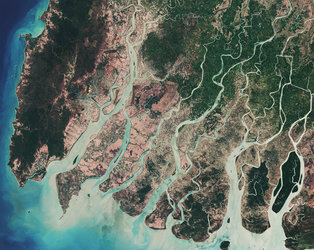Accept all cookies Accept only essential cookies See our Cookie Notice

About ESA
The European Space Agency (ESA) is Europe’s gateway to space. Its mission is to shape the development of Europe’s space capability and ensure that investment in space continues to deliver benefits to the citizens of Europe and the world.
Highlights
ESA - United space in Europe
This is ESA ESA facts Member States & Cooperating States Funding Director General Top management For Member State Delegations European vision European Space Policy ESA & EU Space Councils Responsibility & Sustainability Annual Report Calendar of meetings Corporate newsEstablishments & sites
ESA Headquarters ESA ESTEC ESA ESOC ESA ESRIN ESA EAC ESA ESAC Europe's Spaceport ESA ESEC ESA ECSAT Brussels Office Washington OfficeWorking with ESA
Business with ESA ESA Commercialisation Gateway Law at ESA Careers Cyber resilience at ESA IT at ESA Newsroom Partnerships Merchandising Licence Education Open Space Innovation Platform Integrity and Reporting Administrative Tribunal Health and SafetyMore about ESA
History ESA Historical Archives Exhibitions Publications Art & Culture ESA Merchandise Kids Diversity ESA Brand CentreLatest
Space in Member States
Find out more about space activities in our 23 Member States, and understand how ESA works together with their national agencies, institutions and organisations.
Science & Exploration
Exploring our Solar System and unlocking the secrets of the Universe
Go to topicAstronauts
Missions
Juice Euclid Webb Solar Orbiter BepiColombo Gaia ExoMars Cheops Exoplanet missions More missionsActivities
International Space Station Orion service module Gateway Concordia Caves & Pangaea BenefitsLatest
Space Safety
Protecting life and infrastructure on Earth and in orbit
Go to topicAsteroids
Asteroids and Planetary Defence Asteroid danger explained Flyeye telescope: asteroid detection Hera mission: asteroid deflection Near-Earth Object Coordination CentreSpace junk
About space debris Space debris by the numbers Space Environment Report In space refuelling, refurbishing and removingSafety from space
Clean Space ecodesign Zero Debris Technologies Space for Earth Supporting Sustainable DevelopmentSpace weather
Space weather and its hazards ESA Vigil: providing solar warning ESA Space Weather Service NetworkLatest
Applications
Using space to benefit citizens and meet future challenges on Earth
Go to topicObserving the Earth
Observing the Earth Future EO Copernicus Meteorology Space for our climate Satellite missionsCommercialisation
ESA Commercialisation Gateway Open Space Innovation Platform Business Incubation ESA Space SolutionsLatest
Enabling & Support
Making space accessible and developing the technologies for the future
Go to topicBuilding missions
Space Engineering and Technology Test centre Laboratories Concurrent Design Facility Preparing for the future Shaping the Future Discovery and Preparation Advanced Concepts TeamSpace transportation
Space Transportation Ariane Vega Space Rider Future space transportation Boost! Europe's Spaceport Launches from Europe's Spaceport from 2012Latest

Safe drinking water for West Bengal
Thank you for liking
You have already liked this page, you can only like it once!
With some groundwater in India being contaminated with arsenic, fluoride or salt, around 27 million people are at risk of arsenic or fluoride poisoning. This can cause a range of health issues, including cancer and bone diseases, and the issue is particularly serious in the state of West Bengal.
The ADB is working with the Indian government to provide safe and sustainable drinking water to 1.65 million people in West Bengal. The Bank has explored several ways to do this; one shortlisted solution falls under the Nature-Based Solutions approach, with the aim to improve the storage of floodwater using inactive river channels along the Rupnarayan River. Some channels carry water only during the monsoon season, so during the dry season they could provide a suitable water storage solution.
However, the ADB and its partners have no comprehensive overview of the availability of potential water storage sites in the target area. The EO Clinic recently stepped in to provide such an inventory of suitable sites.
The inventory is being built by ESA EO Clinic service providers Everis (Spain), IHCantabria (Spain) and i-Sea (France) by combining maps of surface water bodies and their dynamics – including the seasonal changes in their extent – with the latest information on land use and land cover for the surroundings of the identified seasonal water areas.
This image shows variations in the extent of the course of the Rupnarayan River in a section of West Bengal, as seen in Copernicus Sentinel-1 Synthetic Aperture Radar acquisitions.
-
CREDIT
everis/IHCantabria/i-Sea for ESA/ADB -
LICENCE
ESA Standard Licence

A colourful view of West Bengal in India acquired by…

Ganges Delta

Sundarbans web

Irrawaddy Delta, Myanmar















 Germany
Germany
 Austria
Austria
 Belgium
Belgium
 Denmark
Denmark
 Spain
Spain
 Estonia
Estonia
 Finland
Finland
 France
France
 Greece
Greece
 Hungary
Hungary
 Ireland
Ireland
 Italy
Italy
 Luxembourg
Luxembourg
 Norway
Norway
 The Netherlands
The Netherlands
 Poland
Poland
 Portugal
Portugal
 Czechia
Czechia
 Romania
Romania
 United Kingdom
United Kingdom
 Slovenia
Slovenia
 Sweden
Sweden
 Switzerland
Switzerland























